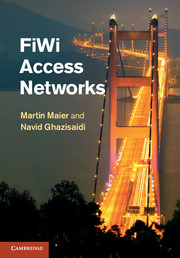1 - Broadband access
from Part I - Introduction
Published online by Cambridge University Press: 05 January 2012
Summary
Access networks connect business and residential subscribers to the central offices of service providers, which in turn are connected to metropolitan area networks (MANs) or wide area networks (WANs). Access networks are commonly referred to as the last mile or the first mile, whereby the latter term emphasizes their importance to subscribers. Future first-mile solutions have to not only meet the cost sensitivity constraints of access networks arising from the small number of cost-sharing subscribers but also have to provide an ever increasing amount of capacity due to emerging bandwidth-hungry multimedia applications such as video on demand (VoD), high-definition television (HDTV), digital cinema, split-screen video, and 3D online games. These new services and applications are expected to require data rates of up to 100 Mb/s per home, which cannot be provided by traditional narrowband access solutions, e.g., dial-up connections. To meet the bandwidth requirements of emerging and future video-dominated services and applications, legacy access networks have been replaced with broadband access networks over the last few years.
Definition
The term broadband is commonly used to refer to high-speed Internet access with data rates exceeding those of traditional dial-up Internet connections, which typically offer data rates of only 64 kb/s or below. More specifically, the Federal Communications Commission (FCC) used to define broadband service as data transmission speeds exceeding 200 kb/s in at least one direction, i.e., downstream (from the Internet to the subscriber's computer) or upstream (from the user's computer to the Internet).
- Type
- Chapter
- Information
- FiWi Access Networks , pp. 3 - 14Publisher: Cambridge University PressPrint publication year: 2011



